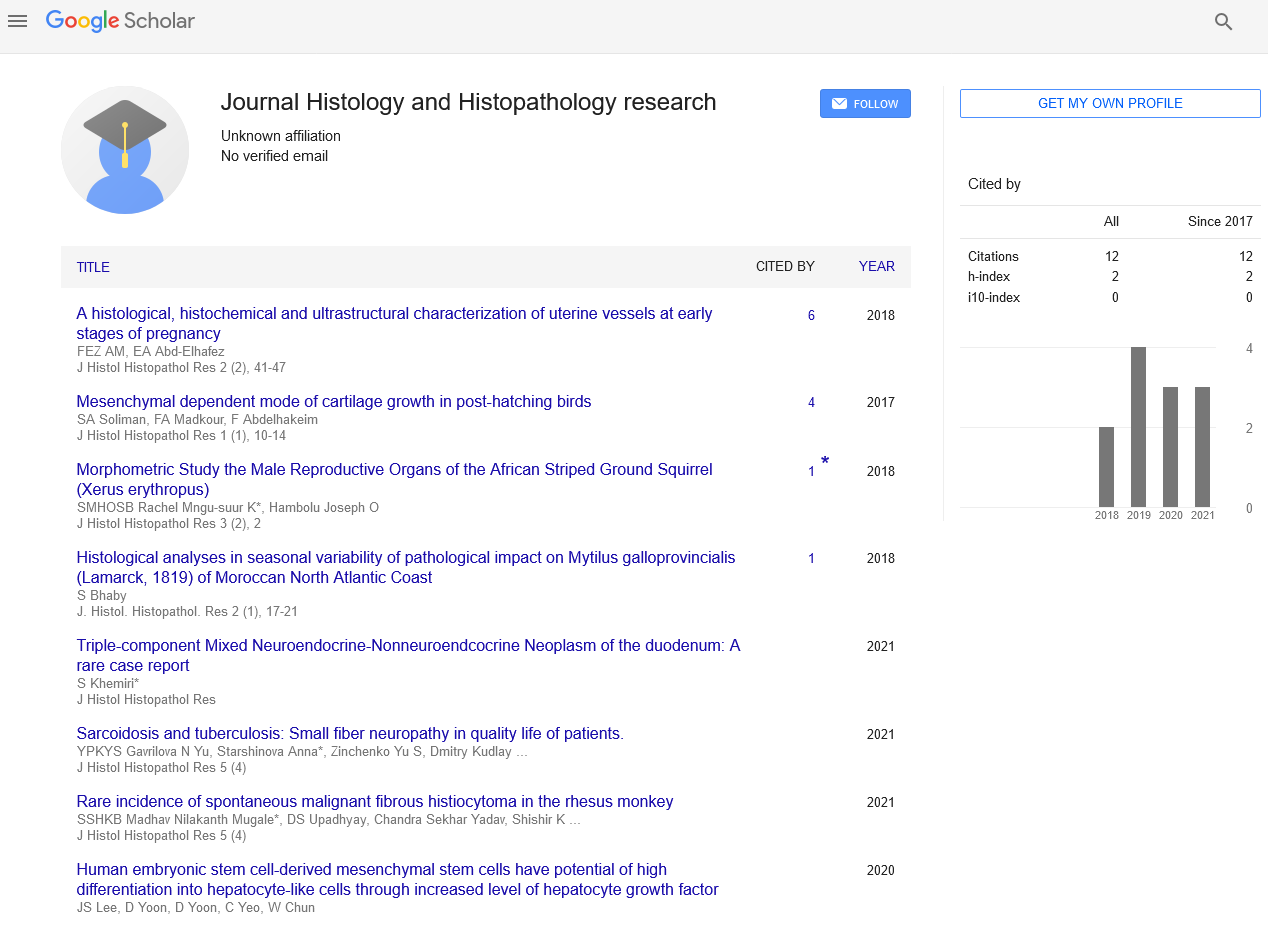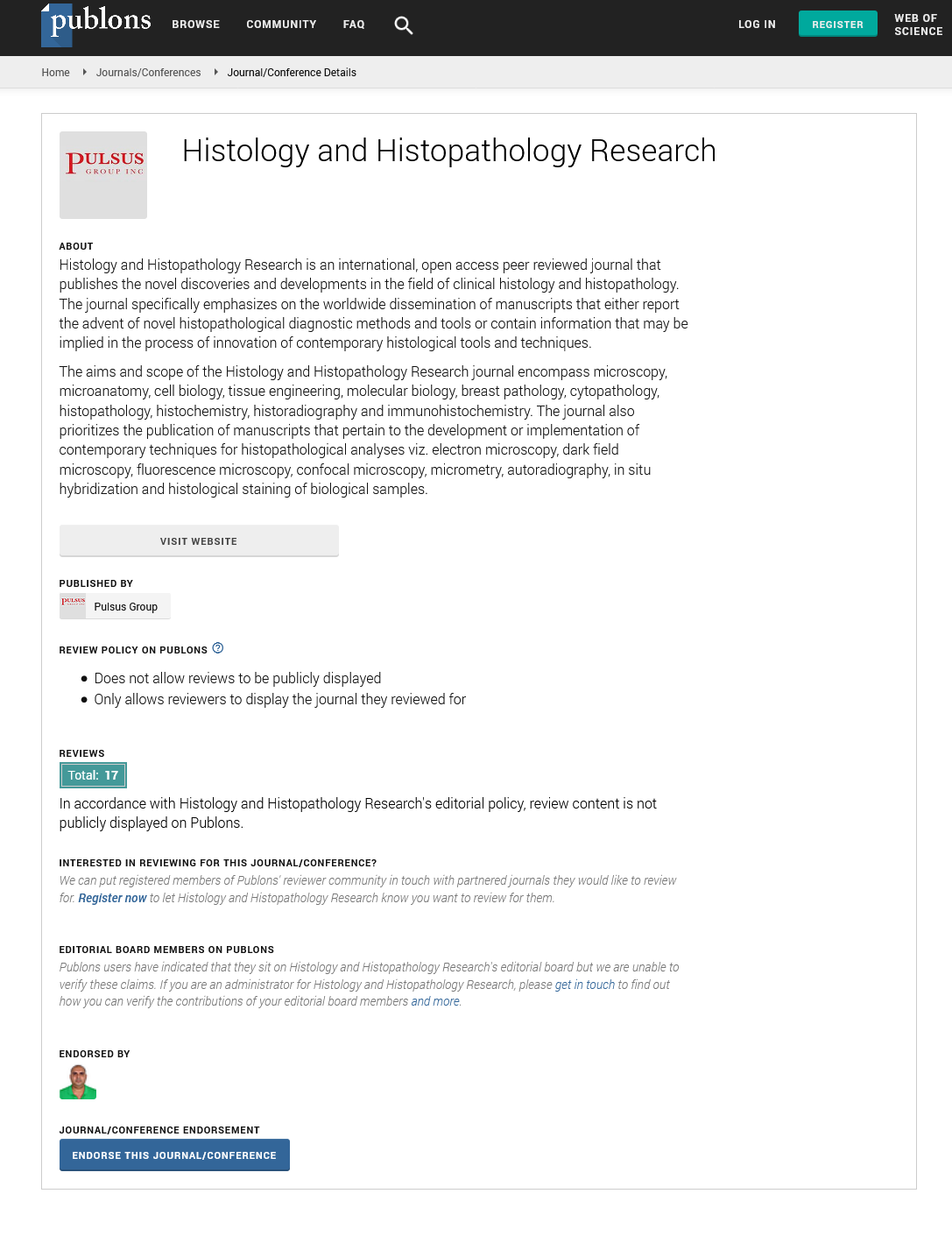Histopathology in Fish: A Strategy for Assessing Aquatic Pollution
Received: 06-Jul-2022, Manuscript No. pulhhr-22-5636; Editor assigned: 09-Jul-2022, Pre QC No. pulhhr-22-5636 (PQ); Accepted Date: Jul 26, 2022; Reviewed: 18-Jul-2022 QC No. pulhhr-22-5636 (Q); Revised: 21-Jul-2022, Manuscript No. pulhhr-22-5636 (R); Published: 30-Jul-2022, DOI: 10.37532. pulhhr.22. 6 (4).91-92.
Citation: Levy M . Histopathology in fish: A strategy for assessing aquatic pollution. J Histol Histopathol Res. 2022;6(4):91-92.
This open-access article is distributed under the terms of the Creative Commons Attribution Non-Commercial License (CC BY-NC) (http://creativecommons.org/licenses/by-nc/4.0/), which permits reuse, distribution and reproduction of the article, provided that the original work is properly cited and the reuse is restricted to noncommercial purposes. For commercial reuse, contact reprints@pulsus.com
Abstract
The purpose of this study is to examine the use of a Weight of Evidence (WOE) approach to evaluate fish health status and biological impacts (BEs) of pollutants for assessing ecosystem health, and to consider its possible application in support of the Marine Strategy Framework Directive (MSFD). External fish disease, liver histopathology, and several biomarkers of contaminant exposure were measured in two flatfish species from four locations in Ireland, including 7-Ethoxy Resorufin O-De-Ethylase (EROD), acetylcholinesterase (AChE), bile metabolites, Vitellogenin (VTG), and Alkali Labile Phosphates (ALP). PCB levels in fish liver were below OSPAR environmental assessment guidelines, indicating that contaminant levels in fish were typically low (EAC). There were consistent findings in fish with low PCB levels, EROD, and PAH bile metabolite levels. The relative frequency of liver lesions connected with the carcinogenic pathway was greatest in Dab from Cork, Dublin, and Shannon. Water contamination causes pathological alterations in fish. Histology, as a biomarker of pollutant exposure, is a valuable technique for assessing the level of contamination, particularly for sub-lethal and chronic impacts. However, a consistent technique for the description and assessment of histological alterations, primarily for application in freshwater fish, is currently absent. The authors of this work suggest a standardised technique for assessing histological results that may be used to many organs. The technique is based on two factors: The extent of a pathological change is scored with a'score value,' and The pathological relevance of this alteration is characterised as a 'importance factor.' The total of the multiplied score values and significance factors of all diagnosed alterations yields various indices.
Introduction
The release of industrial, agricultural, and home waste water into the environment pollutes aquatic systems. Fish are frequently exposed to severely polluted water, particularly in places where the dilution rate of waste water is low.
This has negative consequences, especially when pollutants: (1) are not or very marginally decomposable; (2) have a high biological efficacy; (3) have a high potential for accumulation; and (4) impact each other in a synergistic or additive fashion in the case of numerous contaminants. Water pollution may cause a variety of changes in fish, ranging from biochemical changes in single cells to population changes. Histopathology's value as a biomarker stems from its intermediate level of biological structure. Histological alterations develop as a medium-term response to sub-lethal stressors, and histology provides a quick tool for detecting the effects of irritants, particularly chronic ones, in diverse tissues and organs. Chemical contamination exposure in fish is likely to cause a variety of lesions in various organs. Gills, kidneys, liver, and skin are acceptable organs for histological investigation to detect the impact of pollution. These organs are important indicators of water pollution: gills and skin have extensive surfaces that are in direct and constant touch with potential irritants. Furthermore, both organs have mucous cells. Mucus is vital in disease resistance against viruses and harmful chemicals, as well as a variety of other roles. The liver is involved in the metabolism and subsequent excretion of xenobiotics, as well as the creation of vitellogenin. This protein is induced by endogenous oestrogens and is only found in females. Because vitellogenin is generated even in males by an increasing number of man-made substances that mirror the actions of oestrogens, the liver is of special relevance for environmental research. The kidney is vital for maintaining a stable internal environment in terms of water and salt, excretion, and, to a lesser extent, xenobiotic metabolism.
The Marine Strategy Framework Directive (MSFD) takes an ecosystembased management approach to marine monitoring. The Directive seeks to attain and maintain "Good Environmental Status" (GES) for the maritime environment by 2020. To accomplish GES, a total of 11 qualitative descriptors were developed, including, but not limited to, biological diversity, fisheries, food webs, marine litter, and environmental toxins. Descriptor 8 of the MSFD stipulates that pollutants shall not be discovered at concentrations that cause polluting impacts, and Commission Decision 477/2010 establishes indicators for concentrations in environmental matrices and effects. A rigorous set of monitoring and assessment techniques is necessary to examine this. There are various large-scale national and regional monitoring programmes in marine ecosystems that are meant to investigate the impact of environmental contamination on histological characteristics in fish. These monitoring programmes rely heavily on neoplasms and pre-neoplastic lesions, which are widespread in bottom-dwelling fish from contaminated environments. These lesions are particular, which means that statistical analyses have indicated a link between them and irritants such Polycyclic Aromatic Hydrocarbons (PAHs), Polychlorinated Biphenyls (PCBs), DDT, dieldrin, and chlordanes.
There is some evidence that neoplasms are less common in young fish living in polluted environments than in older fish, and that young fish are at a considerably higher risk of developing nonneoplastic lesions.
A quantification of such non-neoplastic lesions might reveal a clear correlation between pollution and lesions. As a result, these lesions may represent early indicators of environmental contamination than neoplastic lesions, but they are less thoroughly documented.
The preceding research emphasised the need of standardising processes such as sampling, sample handling, preservation, and laboratory examinations. (Bucke 1989, 1994) presented standardised approaches for histology techniques. Because there is no standardised approach for characterising and analysing histological lesions in freshwater fish, a comparison of exams dealing with the same organ is not conceivable. Furthermore, a quantitative comparison of many organs is impossible since many changes are deemed organ-specific and hence not generally relevant.
The incorporation of chemical, whole organism, tissue, and cellular level biomarkers facilitates a weight of evidence approach for assessing the Biological Effects (BEs) of contaminants and allows for the application of Weight Of Evidence (WOE) approaches when making such environmental health assessments. To that end, the International Council for the Exploration of the Sea (ICES) Study Group on the Integrated Monitoring of Contaminants (SGIMC) has created an integrated monitoring framework that includes protocol methodologies, assessment criteria, confounding factors, and supporting data for a variety of pollutant and BE-based techniques. In the context of pollutants and environmental quality, these approaches may be used to quantify and analyse tissue chemistry, sub-cellular, tissue, and whole organism responses in fish and shellfish.






